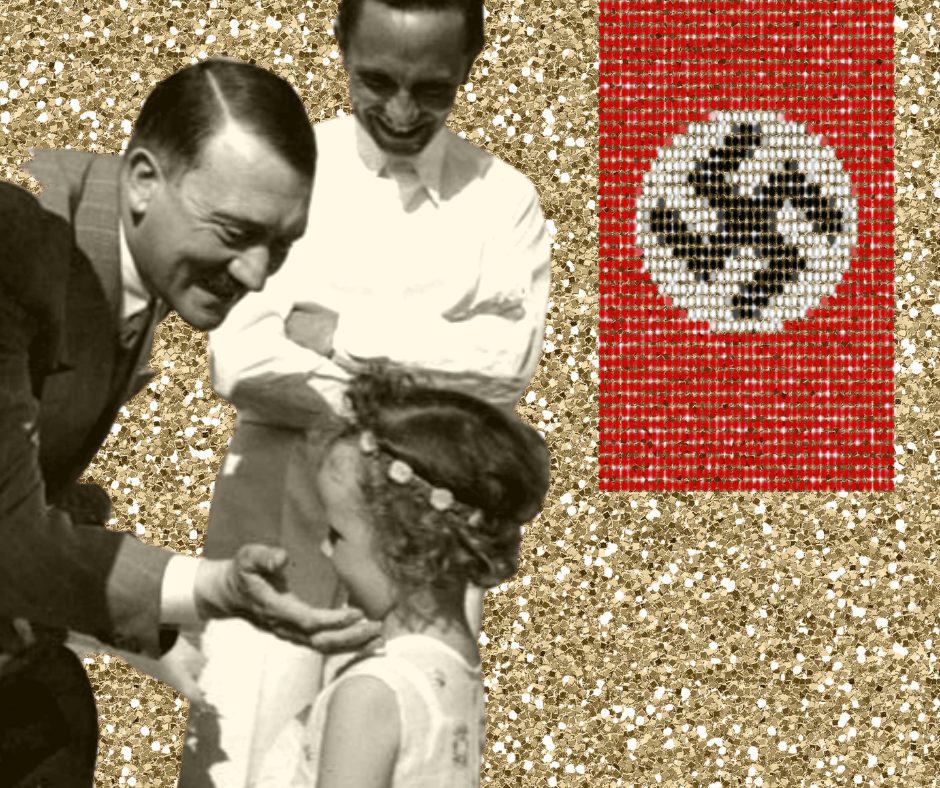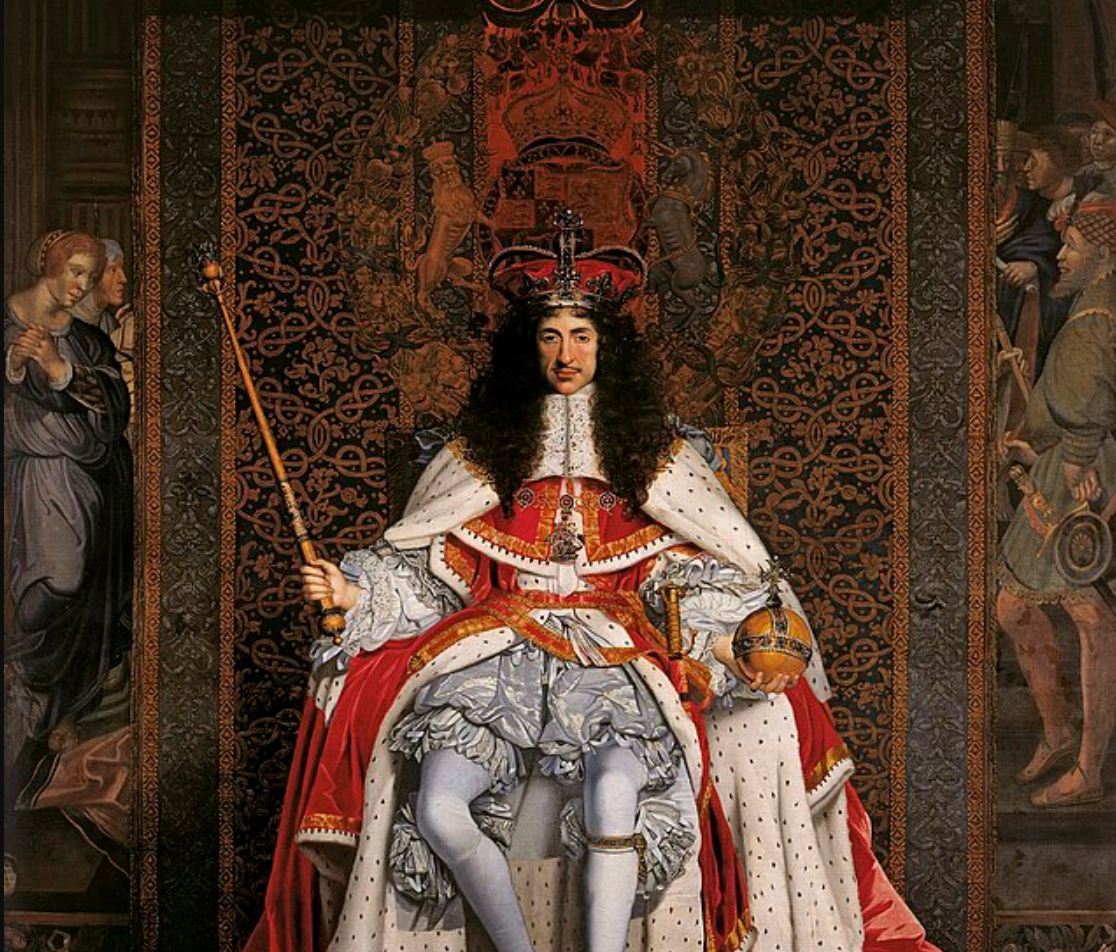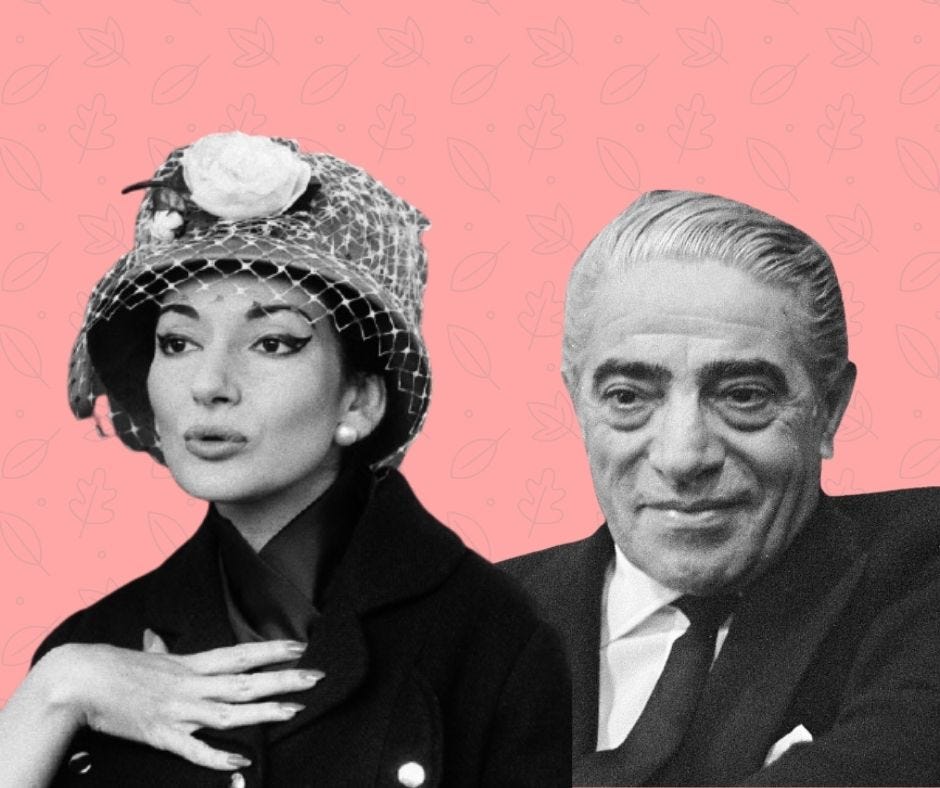This Beautiful Russian Duchess Died in Agony Because of Lenin
And so Elizabeth Feodorovna became a martyr
Some 150 years ago there lived German princess Elisabeth of Hesse. She was one of the most beautiful women of her time and many VIPs courted her. Also, her grandmother was Queen Victoria, the most influential person of the 19th century.
At the age of 20, Elisabeth married a Russian Grand Duke and her new subjects adored her. Later she gave up her royal privileges to become an abbess and help the poor of Moscow.
Every year on July 5, millions of Russians celebrate her as Holy Martyr Elizabeth Feodorovna. They believe her relics heal the sick. But you don’t become a saint if you just die one day in a convent. You have to suffer.
But let me tell you that story from the beginning.
She was born in today’s Germany on November 1, 1864, as Princess Elisabeth of Hesse and by Rhine. Her father was German Grand Duke Ludwig IV, and her mother was Princess Alice — Queen Victoria’s daughter.
They were a typical family of European royalty — merging families for the sake of more property and peace. In this picture of the happy family, you can see Elisabeth on the far left, holding onto her dad’s arm. The mom looks a bit jaded though.
When Princess Elisabeth married a member of the Russian dynasty Romanov, she became Grand Duchess Elizabeth Feodorovna of Russia. A few years later, her younger sister Alix (the chubby little one in the middle) became the last Russian Empress Alexandra.
Alix didn’t have an easy ending either. The Bolsheviks killed the Empress, her husband Tsar Nicholas, and their five children in 1918.
But some 20 years before, no one could imagine commoners would decide the fate of the nobility. Especially if they were modest and popular among people.
Princess Elisabeth of Hesse was brought up to be grateful and kind
Although she came from one of the oldest noble German families, Elisabeth’s childhood was far from royal luxury. Thanks to their mother, Princess Ella and her siblings did the 19th-century Montessori. They swept the floors and cleaned their rooms. The kids even visited wounded soldiers in the hospital with Mommy Alice.
But the English mother didn’t live to see them grow up and get independent. When Elisabeth was only 14, diphtheria killed the 35-year-old Princess Alice and her youngest daughter four-year-old Marie. The family was devastated.
Trying to overcome the great loss, Ella dedicated herself to studying. But she was too beautiful to be just educated.
Being tall, pretty, and of a mild temper, she had many influential suitors: Prince Wilhelm of Prussia, Lord Charles Montagu from Manchester, Sir Henry Wilson (later the head of the British Army), and Frederic II (the Grand Duke of Baden). But money and power meant nothing to the girl, so she was like “Thank you very much, goodbye.”
Then, one day, a Russian Grand Duke did the impossible. Sergei Alexandrovich of Russia stole her heart.
They’d known each other since they were kids because they were distant relatives. Sergei’s mother was Empress Maria Alexandrovna of Russia. She’d often come to visit Elisabeth’s family since she was also Elisabeth’s great-aunt. Still, it wasn’t love at first sight. Elisabeth thought Sergei was an arrogant boy.
But when Sergei lost both his parents within a year, Ella showed him sympathy. Having no mom herself, she already knew what he was going through. Also, they had similar interests: religion and art. Sergei fell in love with the kind girl and Elisabeth finally accepted his second proposal.
However, Grandma Queen Victoria wasn’t pleased. The groom was of Orthodox faith and marriages were a political thing among royals. You can’t just marry for love to the wrong religion!
Despite Grandma’s discontent, Elisabeth followed her heart. And when she moved to Russia, everything changed.
The perfect wife found her happiness. For a while
Elisabeth got married to Grand Duke of Russia Sergei Alexandrovich in June 1884. Sergei had a good bloodline as well — he was the fifth son of Russian tzar Alexander II the Liberator.
At their wedding, Sergei’s nephew Nicholas II saw Elisabeth’s (once chubby) sister Alix for the first time. Later, when he became Russian Emperor Nicholas II Romanov, Alix married him and bore five kids.
Here are Alix, Nicholas II, and their beautiful children — the famous Romanovs. Now Alix seems a bit jaded.
Back to our heroine Ella.
Although she wasn’t legally required to, Elizabeth Feodorovna converted from Lutheran to Russian Orthodoxy at her wedding. Oh, it was a disgrace for a Protestant princess to go over to the Orthodox faith! thought Ella’s sister-in-law Duchess Marie of Mecklenburg-Schwerin.
In her new home in Russia, the family fell in love with Elizabeth. Very soon the whole empire talked about the new Duchess as a considerate and religious woman.
Unfortunately, Elizabeth and Sergei didn’t have their biological children, so they became foster parents to Sergei’s niece and nephew: Grand Duchess Maria Pavlovna Jr. and Grand Duke Dimitri Pavlovich.
There were rumors that Sergei was gay, so they never consummated marriage. But then again, they slept in the same bed for years and Elisabeth treasured the memory of him dearly after death. Anyway, they lived happily ever after for 21 years. And then boom.
The woman who forgave her husband’s murderer
On February 17, 1905, socialist revolutionary Ivan Kalyayev threw a bomb at Sergei’s carriage as it passed through the gate of the Kremlin and killed him immediately.
For the assassin, Sergei Romanov was a weapon of tyranny: A royal basking in luxury while common people couldn’t make ends meet.
Russian farmers were underprivileged and industrial workers had miserly wages. The empire discriminated against minorities, especially Jews. Soldiers felt disrespected because they got nothing after the Russo-Japanese War (1904–1905).
No one lived well except the Royals who were swimming in gold (see the picture of the Amber Room below).
The Duchess Elizabeth Feodorovna was crushed by her husband’s death. But then again, she saw it as some cosmic revenge. At the start of his tenure, the Grand Duke had expelled 20,000 Jews from Moscow overnight. Elizabeth knew there’d be a backlash and she prophesized: “God will punish us severely.” He certainly did.
Now she was praying for days and on Sergei’s tombstone, she wrote:
“Father, release them. They know not what they do.”
But if you’d questioned them, they were doing a noble thing.
When Elizabeth asked the murderer why he had killed Sergei, Kalyayev said he wanted to take revenge on the tyrant. Oh, please, repent and I’ll beg for your life. No. He wanted to die instead.
They hanged him three months after the murder.
Since the couple didn’t have biological children, Elizabeth didn’t want to stay in court after Sergei’s death. She decided to devote her life to God.
In 1909, the Grand Duchess sold her property and luxurious jewelry, including her wedding ring. She donated the money for the construction of the Convent of Saints Martha and Mary in Moscow. This was supposed to be her new home until her death.
But it all didn’t go according to plan.
“The Guardian Angel of Moscow”
As she became the abbess of the Convent of Saints Martha and Mary, she opened an all-inclusive aid for the needy on its grounds: a hospital, a chapel, a pharmacy, and an orphanage. Come, poor people, and I’ll feed and heal you.
Every day her convent handed out 300 meals to the poorest residents of Moscow. Elizabeth would even go to the worst slums to help the needy, so they called her “the guardian angel of Moscow. “
But her life wasn’t sorted.
Elizabeth’s close relationship with her younger sister Tsarina Alexandra Feodorovna grew cold over time. The reason was mystic Grigori Rasputin, a self-proclaimed holy man, who got a huge influence over the Empress and Emperor Nicholas II.
Elizabeth was pretty suspicious of Ra-Ra-Rasputin (who wasn’t really the lover of the Russian Empress, she was just enchanted by him).
In 1916, Elizabeth would see Tsarina Alexandra for the very last time at Tsartskoye Selo, the fancy royal town south of St. Petersburg. Elizabeth told Alix she was concerned about Rasputin’s influence over her and Nicholas. In fact, the whole family was worried by then.
What’s more, Elizabeth probably suspected conservative noblemen would murder Rasputin because of his strong influence over the royals. And she probably knew who’d do it. According to her telegrams on December 17, 1916 when Rasputin was killed, she described that killing as “a patriotic act”.
Take a look at a room in Tsartskoye Selo, where the two sisters saw each other for the last time. It’s a hard-knock life.
Then came 1917 and the October Socialist Revolution. The Bolshevik Party of Vladimir Lenin got into power and inaugurated the Soviet regime. Hello, the proletariat. Bye, Royal family.
Although Elizabeth didn’t meddle in politics nor had any concrete power, Vladimir Lenin ordered the Soviet secret police Cheka to arrest her in 1918. When you clean, you clean every spot.
And so the Bolsheviks took the former Grand Duchess and her seven royal relatives out of their homes. On May 20, 1918, they imprisoned them in a school in Alpayevsk, a mining town outside Siberia. The imperials stayed locked up there for two months.
The death no one deserved
Only one day after the execution of her sister Alexandra and her family, it was Elizabeth’s turn.
It was July 17, 1918, when the Bolsheviks took Elizabeth and her relatives to an abandoned iron mine. They beat them up and threw them alive into a pit 66 feet deep (20 meters). Ladies first. Elizabeth found herself in the hole before the rest of her family.
Still, the victims didn’t fall to the bottom but to an outlet within.
According to the testimonial of one of the murderers Vasily Ryabov, you could hear prayers and spiritual songs from the pit. Deep down in the dark, Elizabeth and her cousins were boosting each other’s morale. We have each other, don’t give up just yet.
Impatient to end the whole thing, the Bolsheviks threw a grenade into the pit. But only one member died and the singing kept on. Were they kidding?! Those damn royals, you can’t just wipe them out.
Ryabov threw the second grenade and the song didn’t stop. Then the Bolshevik leader had had enough. Throw brushwood into the opening! Set it alight!
To avoid any protest by the Russian public, the Bolshevik organizers made a little arrangement.
Early on July 18, 1918, the leader of the Alapayevsk Cheka Abramov exchanged several fake telegrams with his fellow Soviet — Alexander Beloborodov. In them, the two guys claimed that an “unidentified gang” attacked the school where the royals were held hostage. It wasn’t me. Me neither.
A month later, the anti-Bolshevik White Army seized the murder scene from the Soviet Red Army. Of course, all that time Lenin didn’t care about the Grand Duchess:
“Virtue with the crown on it is a greater enemy to the world revolution (i.e. Marxist revolution) than a hundred tyrant tsars.”
As we can see, politics rarely boasts with guys full of empathy.
Elisabeth’s Legacy
On October 1918, three months after the murder of the Royals, the White Army discovered the bodies of Duchess Elizabeth and her family members in the pit.
Despite all the torture, the Duchess died of starvation and injuries, not fire. Before her death, she managed to bandage dying Prince Ioann’s wounds on the head with her headdress.
Fearing that the Bolsheviks could attack again soon, they transferred Elizabeth’s body in secret to China. There, she was buried in the cemetery of the Russian Orthodox Mission in Beijing.
Three years later, her remains were taken to Jerusalem to the Church of Mary Magdalene at Gethsemane.
And good they were transferred because, in 1957, the Russian Orthodox Mission in Beijing was destroyed. Thirty years later, the Chinese desperately needed a parking lot at that place. There’s never enough parking space, so people have to get by.
In 1981, after 63 years, Elizabeth Feodorovna was finally canonized by the Russian Orthodox Church Outside Russia. And in 1992, the Moscow Patriarchate did the same, adding the prefix Holy Martyr to her name.
In 1998, Elizabeth’s statue found itself among ten figures of the 20th-century Christian martyrs at Westminster Abbey church in London. Here she is in the picture— on the far left, next to Martin Luther King, Jr.
On June 8, 2009, was Duchess Elizabeth posthumously rehabilitated in Russia together with other members of the Romanov family. The Prosecutor General of Russia said:
“All of these people were subjected to repression in the form of arrest, deportation, and being held by the Cheka without charge.”
Nine decades after they killed her, Grand Duchess Elizabeth Feodorovna finally got the appreciation she deserved.
In the garden of her convent in Moscow, after the dissolution of the Soviet Union, they erected a statue of hers with an inscription:
“To the Grand Duchess Elisabeth Feodorovna with repentance.”
Conflicts and revenge are tricky. There are always innocent people who end up as collateral damage because some beliefs are “better” than others. But if you look on the bright side of life, they can become saints.
Sources:
Execution of Grand Duchess Elizabeth Feodorovna and Five Other Romanovs — Unofficial Royalty
Elizabeth Feodorovna: A Princess and a Saint— Historic Mysteries









